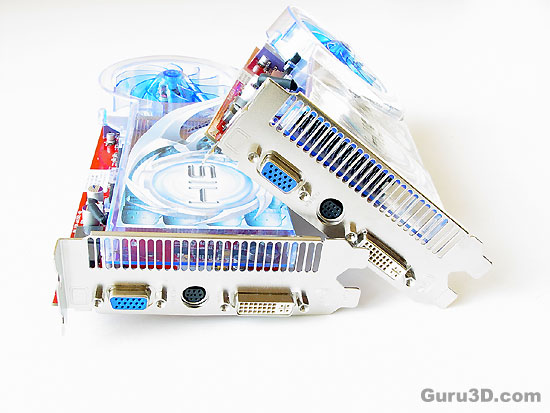Page 1
HiS Radeon x850 XT - x850 XT PEIceQ II (iTurbo)
Product type: Graphics card
Memory: (256 MB GDDR3)
Manufacturer: HIS
Website: www.HISdigital.com
MSRP: 350-500 USD
Seek best price for products of this type.
 A couple of weeks ago I received an email from HiS technology, requesting if we would like to review their new AGP based Radeon x850 XT and x850 XT Platinum Edition. Two things popped into my mind instantly:
A couple of weeks ago I received an email from HiS technology, requesting if we would like to review their new AGP based Radeon x850 XT and x850 XT Platinum Edition. Two things popped into my mind instantly:
- I need to dust of my AGP test rig, which hasn't been used since December 2004 since everything is PCI-Express these days.
- Hold on, do we have a processor for that Socket 478 system that is fast enough to feed these graphics cards?
Now after dusting the PC it was time to look for the processor as you really need something in the likings of 3.2 GHz or higher to fully make use of all that extreme graphics card power. I stumbled into a 2.8 GHz CPU (which was still a high-end CPU last year) that I knew could overclock very well... So there you go. 100% stable at 3.4 GHz, we have the test system ready and awaiting the love of the Radeon x850 XT and Radeon x850 XT Platinum Edition.
Both products tested today come with the very chilly IceQ II cooling package, which means a large but very silent cooler. For the standard Radeon x850 XT model additional iTurbo overclocking software is included, which makes the product run as fast as a Platinum Edition with the click of a mouse button. A very cool feature. Of course we'll explain all the features in this review, but I'm trying to round out the introduction here! Now then, it's hard to determine what exactly you are buying these days. To understand where this product exactly is performance wise the best way to explain it is to look at a small overview on the remarkable number of x800/x850 currently on the market versus their primary specifications. Let's have a look by placing all popular cards in a nice overview:
| Chip | Pixel Pipelines | Graphics Core Frequency |
Memory Frequency | |
| Radeon X800 | R430 | 12 | 400 MHz | 350 MHz |
| Radeon X800 Pro | R423 | 12 | 475 MHz | 450 MHz |
| Radeon X800 XL | R430 | 16 | 400 MHz | 500 MHz |
| Radeon X800 XT | R423 | 16 | 500 MHz | 500 MHz |
| Radeon X800 XT Platinum Edition | R423 | 16 | 520 MHz | 560 MHz |
| Radeon X850 Pro | R480 | 12 | 520 MHz | 540 MHz |
| Radeon X850 XT | R480 | 16 | 520 MHz | 540 MHz |
| Radeon X850 XT Platinum Edition | R480 | 16 | 540 MHz | 590 MHz |
AGP, I hear you ask. How's that possible as the x850 is a PCI-Express silicon?
But what you'll see on the next page is the HiS x850 XT AGP version with the bridge chip, that's right. That bridged solution (codename Rialto) is to make the silicon AGP 8x compatible. Quite weird to see since last year ATI was laughing hard at NVIDIA for using a bridge chip while their "native" solution was the better answer in their opinion.
ATI learned something the hard way. It's cheaper to include an extra bridge chip since you do not have to redesign every new GPU/VPU with AGP compatibility. So ATI can use the same GPU/VPU on a PCI-Express as on an AGP card, the cheap to produce bridge chip can make any PCI-Express chip compatible in no time at low costs. So now we have both PCI-Express and AGP versions of this card. That's where we'll be focusing on in this article. We all know how well these cards perform against the competition. So we'll focus on the performance between PCI-Express and AGP platforms.

HiS x850 XT AGP & HiS x850 XT Platinum Edition AGP
